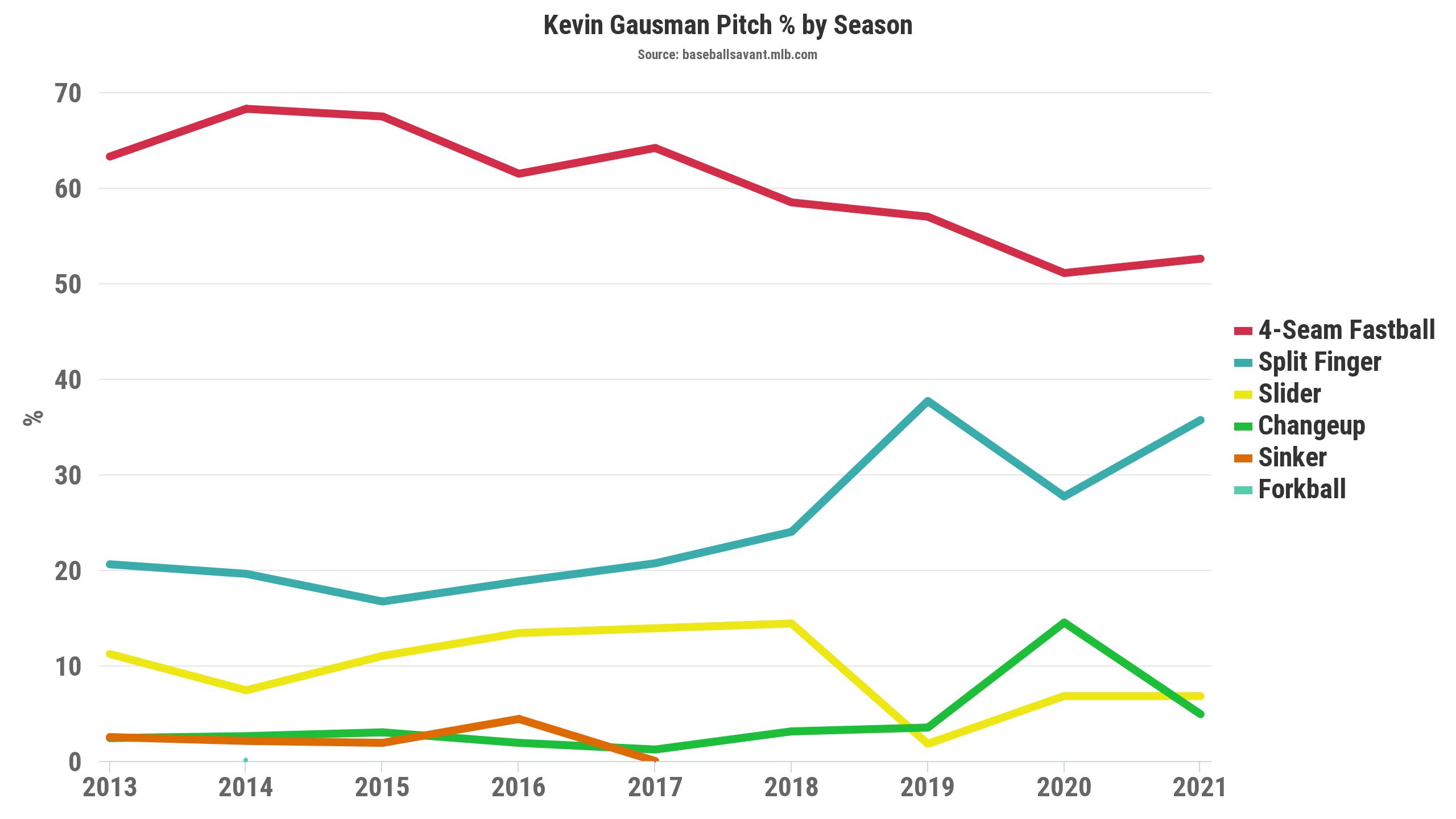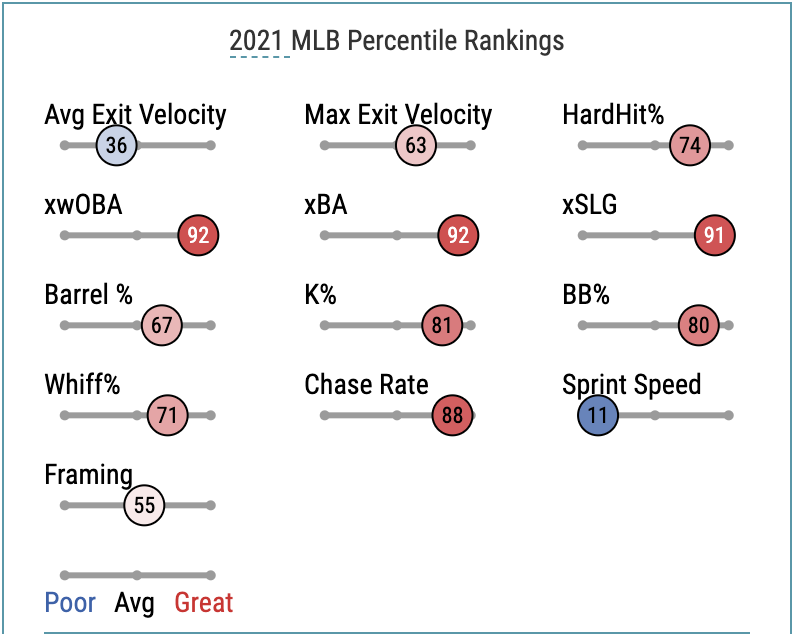It’d be a little obvious (and a lot reductive) to say that no one predicted this start from the Giants. But here we are at roughly the 55-game mark, and the team is coming off of winning three of four against the defending World Series champion Dodgers. Their +69 run differential is not only super nice, it’s also the third-best mark in the league. While there are a few guys who have certainly upped their game into another tier this season, one of the best parts is the “by-committee” nature of their success. Let’s break it down.
Supreme Arms
For a team that entered the year with what was considered a shallow rotation, the Giants arms have emerged as the club’s strength. It has been a staff success story, too — the club is in the top-10 in virtually every notable team pitching metric, including staff Runs Against/Game, ERA, Home Runs Allowed, Walks Allowed, ERA+, FIP, WHIP — you name it. Gandalf himself couldn’t help but tip a cap to this staff, and much of it is paced by the guy at the top.
There was a time when Kevin Gausman was considered a bit of a lost cause. At the end of his six-year tenure with the Orioles, he was traded to Atlanta, where he struggled to establish himself across two seasons. He finished his tenure with the Braves with an 8-10 record, a 4.77 ERA, 1.34 WHIP, 8.3 K/9, and 4.02 FIP across 26 starts. He was waived in August of 2019 and picked up by Cincinnati (that’s right: Gausman pitched for the Reds), but started only one game for that rotation before being non-tendered at the end of the season.
Entering the 2019/2020 off-season without a contract and coming off some of the lowest points in his career, there was every reason to doubt that Gausman would be anything resembling the player the Orioles had hoped he’d be after selecting him fourth overall in the 2012 draft. Nevertheless, Farhan Zaidi and the Giants saw something in the righty, and offered him a one-year show-me contract. And show them, he did. Gausman posted a 3.62 ERA, 1.1 WHIP, 11.9 K/9, and 3.09 FIP across 10 starts in the shortened season. So impressed were the Giants with his improvement, that they actually qualified him for a pretty penny in the 2020/21 off-season, and Gausman netted himself a none-too-shabby $18.9 million deal and the role of Opening Day starter.
The beginning of this season has been even more than either side could’ve hoped for, though, as Gausman has positioned himself squarely at the fore of the NL’s “If Jacob deGrom Didn’t Exist” Cy Young race.
Much of the success that Gausman has seen over the past two seasons has come from leaning on his devastating splitter as a central pitch in his arsenal — and 2021 has been the pinnacle of that.
https://gfycat.com/yawningthornychafer
He has thrown the pitch 35.9% of the time thus far, and has established himself firmly as a fastball/splitter pitcher. It helps that the velocity difference between his fastball (94.7 mph average velocity) and splitter (83.8 mph) are so diverse as to keep hitters drunkenly off-balance.

I’m not going to dive that much more into Gausman individually, as the one and only Alex Fast gave a fantastic breakdown of his changes and evolution already. If you have ‘t read it, do yourself a favor. It is fantastic.
But there was already expectation on Gausman heading into the 2021 season, and he was perhaps the one sure thing among the Giants staff. Beyond him, there were question marks galore. Well, in the early going, those questions marks have turned into emphatic question marks, as the Giants staff has elevated itself into one of the league’s best.
Like Gausman in 2020, the salvage job done on Anthony DeSclafani in 2021 has been noteworthy. The Reds’ castoff, whose truly awful 2020 season with the team saw him released to free agency, signed a similar show me contract to what Gausman signed prior to 2020. The result? Career-best numbers through 11 starts and a career resurrection. He has a 3.56 ERA, 3.83 FIP, and is producing the best ground-ball and Hard-Hit rates of his career. Although some of his Statcast underlying metrics suggest regression may be coming, he has produced a 0.8 WAR already, and has slotted nicely into the #2 slot.
The club also has to like what it has gotten out of Logan Webb and Alex Wood in the early-going, with the latter flashing signs that his peak days of Dodger dominance may not yet be in the rear-view. But easily the most surprising performance of them all has to be Johnny Cueto, who has turned back the clock to the early 2010s with some of the strongest numbers of his career.
The 35-year old Cueto has a 3.45 ERA through eight starts to go along with a 2.62 FIP (which would be the lowest of his career) and 4.7% home-run-to-fly-ball rate. This has all led to a 1.4 WAR already, and when combined with an average fastball velocity that is his highest since 2015, there’s every reason to believe that the Johnaissance could be real. At the very least, he’s made a compelling case to stay in the rotation when Aaron Sanchez returns from injury. And he’s back to his old Johnny ways when it comes to pitch timing, too.
Johnny Cueto, Messing with Timing (all in 1 AB). pic.twitter.com/jjcrMUJpVY
— Rob Friedman (@PitchingNinja) May 31, 2021
All of this is to say that perhaps the biggest reason for the Giants success to this point has been the performance of their rotation, which has far exceeded expectation. Their combined 7.8 WAR may seem unsustainable for the balance of the season, but at the very least, it has put them in a position to be competitive
Ascension
I’m a sucker for a good story and, at 34-years old, future Hall of Famer Buster Posey is having exactly that. But it’s not just the story that has been great; Posey is making himself a legitimate case as a top-5 MVP candidate in the early-going. This is, of course, made even more remarkable by the fact that he sat out the entirety of the 2020 season due to the COVID-19 pandemic. While this was a deeply-personal decision that Posey ultimately made on account of having welcomed a set of twins into his family just before the season was to begin, he made the decision knowing that 2021 was the last year of his big-money eight-year contract with the Giants. Missing a full-year of production and training — particularly in your 30s — could’ve been deemed a risky decision for the catcher to make, but his 2021 season is proving that missing the year had absolutely no impact on his all-World talent.
Posey currently ranks in the top-30 in the majors in xwOBA and xOBP, while leading or closely trailing the leader in most major hitting categories. His slash line (.323/.411/.598) would be the best numbers since his landmark MVP season of 2012, and his 10 home runs already produced are the most he’s hit since 2017. His ridiculous .276 ISO would far eclipse his career-high of .213, and his .333 BABIP suggests that — at least in terms of his contact hitting — these numbers are no fluke. Now, his offensive 31.9% home-run-to-fly-ball rate is simply unsustainable, but to expect 20+ homers and 60+ RBI while hitting above .300 no longer seems like an absolute best-case scenario — it seems well within reach.

Posey’s 2021 numbers show his preternatural patience, mixed in with respectable hard-hit numbers.
Oh, and he seems to be having a lot of fun out there, too:
Buster Posey said he was smiling so much after homer because he was "having fun with a group of fans" near dugout. Asked if he was being heckled before at-bat, he simply pointed out that he was at Dodger Stadium.
— Alex Pavlovic (@PavlovicNBCS) May 29, 2021
Beyond Posey, no one in the lineup is putting up anything that could be considered sure-fire All-Star caliber numbers, but a few 30+ former All-Stars are definitely having throwback campaigns. Evan Longoria is posting some of the best numbers he’s produced in the past decade, hitting .274/.360/.510 with nine home runs and 29 RBI and some strong hard-hit numbers. At 34, Brandon Crawford already has 11 home runs and is on track for his best season since he was an All-Star, Silver Slugger and Gold Glove winner in 2015.
In fact, the team has — as of publication — some of the best power numbers in the league. The team is second in total home runs (78), and in the top-10 in SLG, OPS+, and total bases – this despite having, on average, the oldest lineup in the league (average age of 30.9).
While some of these numbers look unsustainable for the long term, the renaissance of some of the club’s anchors, combined with respectable depth production from the likes of Brandon Belt, Mike Yastrzemski, Austin Slater, and Donovan Solano, suggests that this is a team that could maintain a competitive pace for the balance of the season — even in the challenging NL West.
Photo by Rich Graessle/Icon Sportswire | Adapted by Jacob Roy (@jmrgraphics3 on IG)

Gandalf doesn’t wear a cap.
Oh, and, if you’ve had a decent pitching development staff over the last decade+, one of the best rules of thumb has been to find a relatively high-level draft choice from the Orioles, and then sign & fix them. This has been overridden by the Pirates in the same kind of situations in recent years, and Dylan Bundy doesn’t count because he’s only been handled by trash pitcher-coaching (LAA) since, but it’s basically been the truth if you want to squeeze at least a few years out of a pitcher that was middling while w/ the O’s.
Bundy COULD find a resurgence if he goes somewhere like NYY, HOU, CIN, TBR, etc…
Gausman MAY be the last of this class, but he fits the stereotype.
I am a Giants fan and I have no illusions of this as a playoff team. Good for them to not cop out and go for a rebuild but this is not a great team and it will catch up with them. There are so many things happening right now that will completely fall apart within the next few months. The NL West is one of the few division in baseball with multiple teams making a real effort which doesn’t help.
Late to this party but just wanted to give props to whoever designed the Coltrane-inspired graphics for this article. A work of art, much like the album that inspired it.